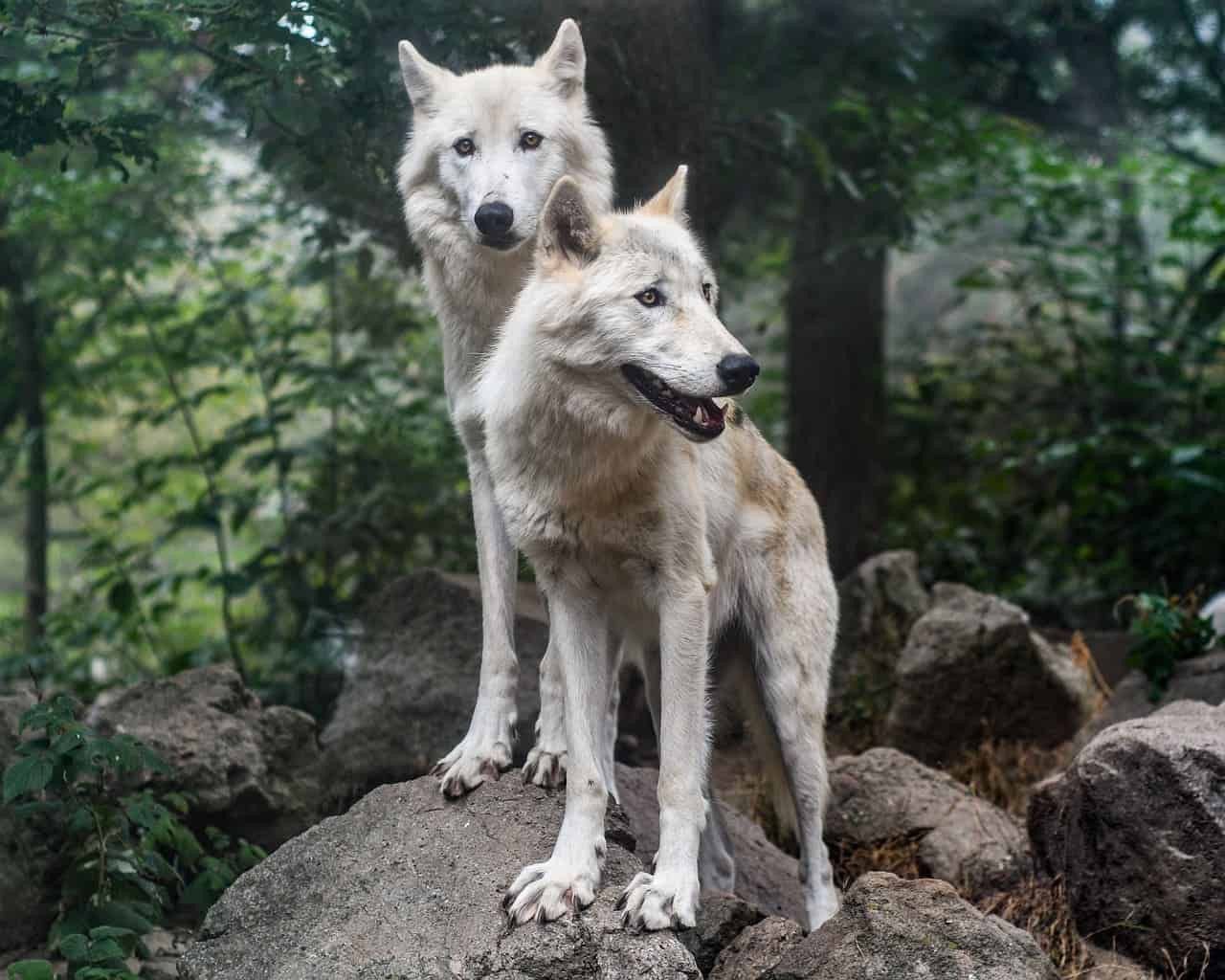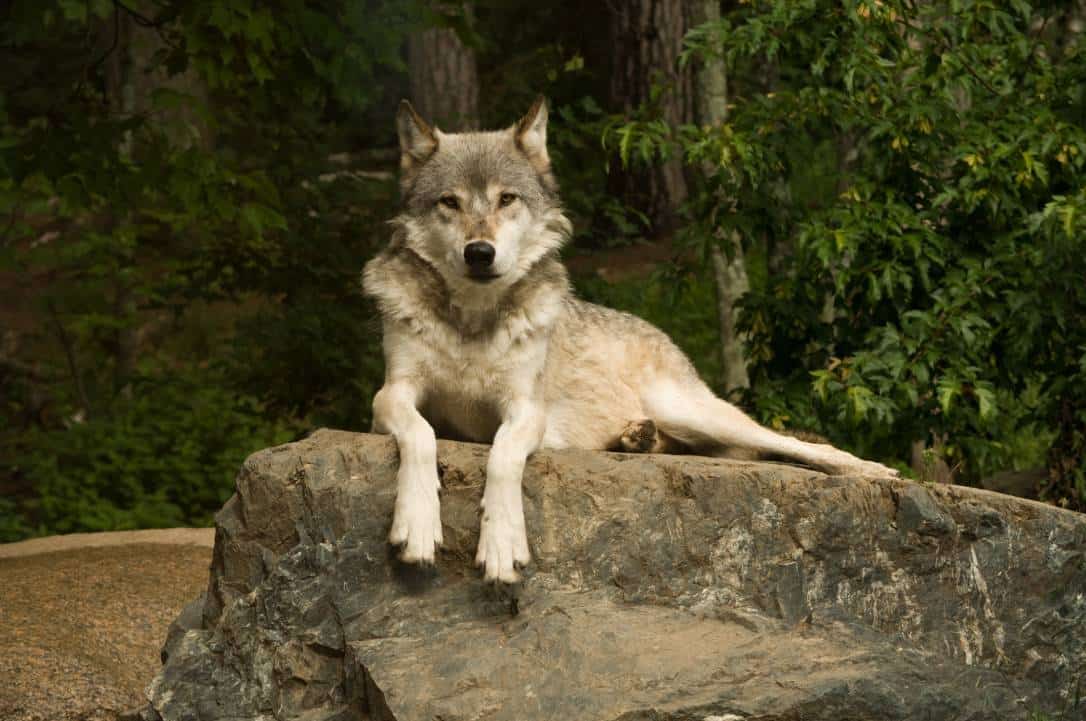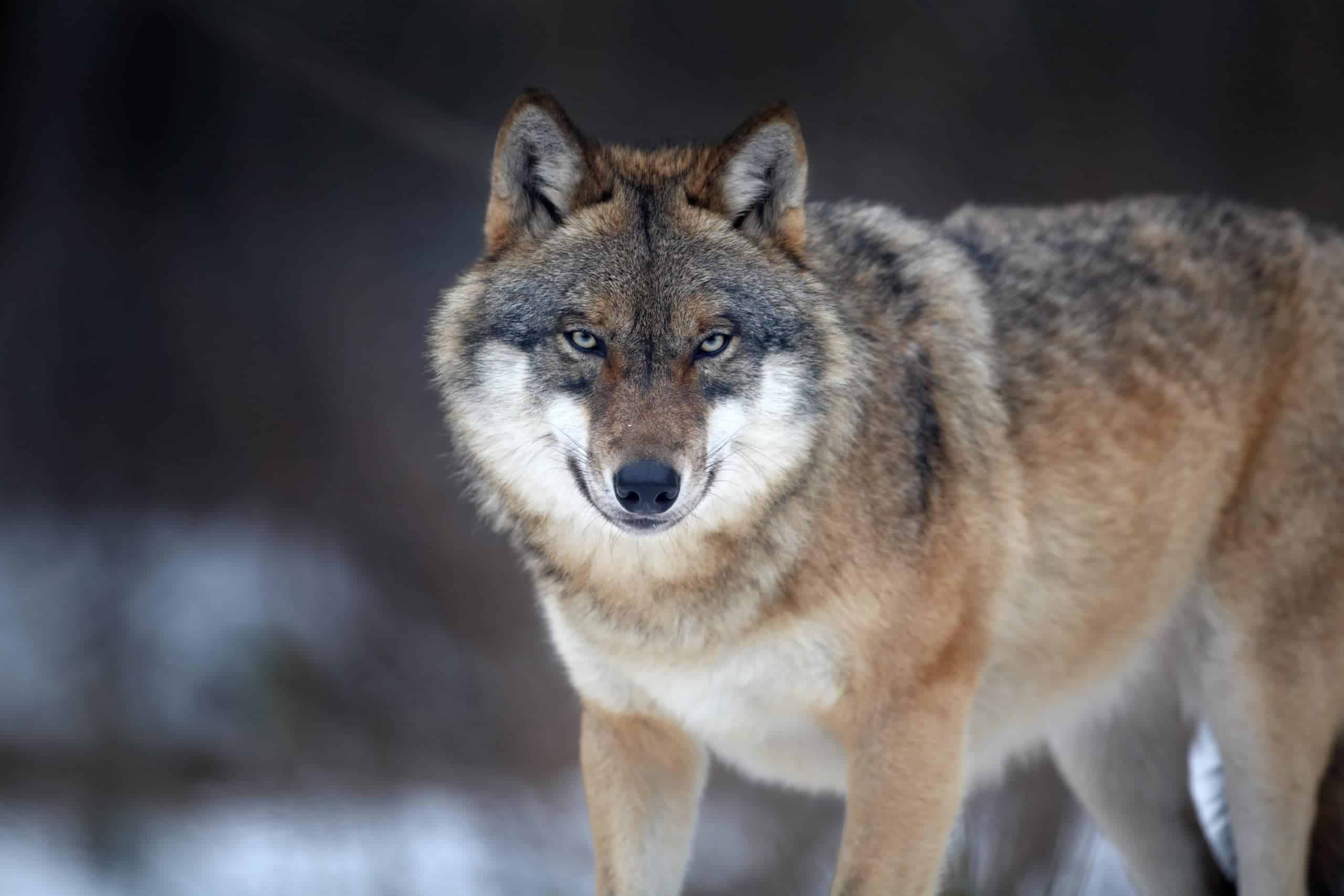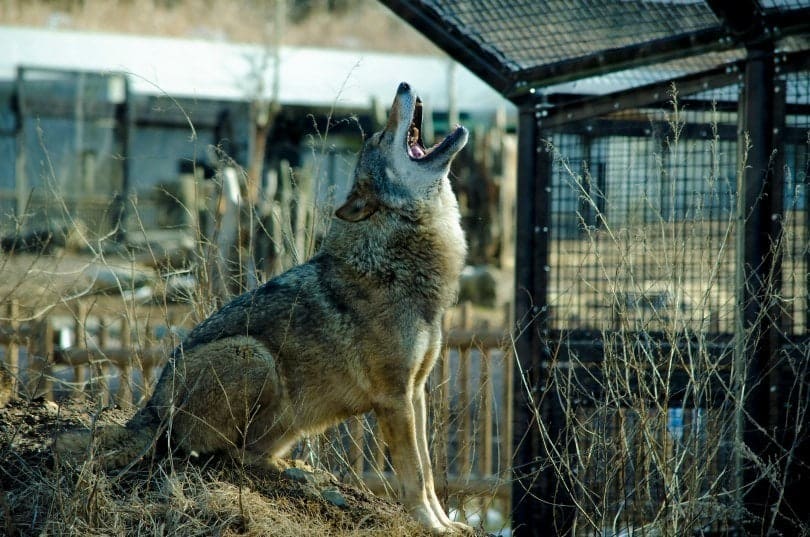When it comes to the animal kingdom, wolves are one of the most misunderstood creatures. Many people think they are just like dogs, but this could not be further from the truth.
While dogs and wolves are related, they don’t bark the same way. Wolves can bark, but they sound significantly different from domestic dogs. Their bark also holds a different meaning.
Wolves have a variety of vocalizations and communication tactics used for different purposes, and understanding these vocalizations is key to understanding wolf behavior. Let’s take a closer at them and how they compare to our pet dogs.
 Can Wolves Bark?
Can Wolves Bark?
The answer to this question is a bit complicated. Technically, yes, wolves can bark, but it’s not like the bark you’re used to hearing from your family pooch.
Wolves typically reserve their barking for when they are alarmed, and it sounds more like a short, sharp yelp than the prolonged “woof” of a dog.
The wolves’ bark can be combined with other vocalizations such as howling, whimpering, and growling to communicate their emotions.
Why Do Dogs Bark?
Dogs bark for a variety of reasons. They may be trying to get our attention, warning us of danger, or simply expressing excitement or happiness.
Barks can also be a sign of aggression or dominance, depending on the tone and body language of the dog.
Animal behaviorists have grouped the function of dog barks into various groups, which include:
- Social play
- Play soliciting play
- Social contact, such as a “greeting”
- Loneliness
- Excitement
- Agonistic behaviors
Simply put, a dog’s bark shares information about its emotional state and surroundings. Studies also show that a dog’s bark is an important means of communication due to their relationship with humans.
Barks are largely communicating with other dogs and us.
Studies in a similar vein show that humans can infer the meaning of a dog’s bark based on pitch and tone. Humans with more extensive dog experience have a higher rate of correctly identifying the type of bark.
The Relationship Between Wolves and Dogs
The domestic dog (Canis familiairis) is a direct descendant of the gray wolf (Canis lupus). Modern-day dogs came to be after thousands of years of being bred by humans for different purposes such as hunting, herding, and companionship.
While dogs and wolves are closely related, they have evolved to become quite different creatures.
The most obvious difference is in their appearance. Wolves are much larger than most dogs, with males averaging around 180 pounds and females around 130 pounds. They also have longer legs, bigger feet, larger muzzles, and a more streamlined body.
Their coat also differs, with wolves having a thicker double coat that helps them to better withstand the cold weather.
Dogs, on the other hand, come in all shapes and sizes due to the many different types of breeds that have been created.
There are also big differences in temperament and behavior between dogs and wolves. For instance, dogs are naturally social creatures that enjoy the company of humans and other animals, while wolves are much more independent and prefer to stick to their own pack.
Dogs have also been bred to be less aggressive than wolves, which makes them much better suited as a pet.

 Vocalizations of Wolves and What They Mean
Vocalizations of Wolves and What They Mean
Wolves use a variety of vocalizations to communicate with each other and their pack. Howling is perhaps the most well-known wolf vocalization, and it serves multiple purposes.
Howl
Howling is a way for wolves to communicate over long distances. It can be used to rally the pack together, warn other packs of danger, or let others know where they are.
Wolves will also howl when they are lonely or sad. The sound of a howl echoes for miles and can be very haunting.
Growl and Snarl
Growls are usually used as a warning sign and can be directed at other animals or humans. A growl can also be a sign of aggression or dominance.
Snarls are similar to growls but are usually louder and accompanied by bared teeth. This is a clear sign that the wolf is feeling threatened and is ready to attack.
Whimper
A whimper is a sign of submissiveness or fear and is often used by lower-ranking members of the pack to signal to the alpha that they are not a threat. Adult wolves will also whimper when they are hurt or in pain.
Puppies whimper when they are trying to get their mother’s attention.
Yip
A yip is a short, high-pitched vocalization that is used for a variety of purposes. Puppies will yip when they want to play or get their mother’s attention.
Adult wolves will also yip when they are excited or happy, such as when they are greeting another member of the pack.
Whine
A whine is a low, plaintive vocalization that is usually used to express disappointment or distress. For example, a wolf may whine when it’s hungry or in pain.
Bark
As we mentioned before, wolves do bark, but it sounds nothing like the bark of a dog. Wolves will usually only bark when they are alarmed or feeling threatened.
The sound is more like a short, sharp yelp than the prolonged “woof” of a domestic dog.
 Other Forms of Wolf Communication
Other Forms of Wolf Communication
While wolves’ vocalizations seem to be rather descriptive, they cannot convey the depth of communications wolves need for courtship, territory claiming, aggression, parenting, etc.
Wolves also use urination, scat, pheromones, and body language to communicate with each other.
Urination
Wolves will urinate on trees, rocks, or any other tall object to leave their scent and mark their territory. This is usually done by the alpha male and female of the pack to show other wolves that this area is claimed.

Scat
Scat is another way for wolves to mark their territory and leave their scent. It can also be used to communicate with other wolves.
Pheromones
Wolves, like all animals, communicate through pheromones. These are chemicals that are released into the air and can convey a variety of messages, such as the availability to mate.

Body Language
Wolves also use body language to communicate with each other. For example, they may lower their heads and bodies to show submission, or they may stand tall and erect to show dominance.
Wolves will also use facial expressions, such as baring their teeth, to convey their mood.
 Final Thoughts
Final Thoughts
Wolves are fascinating creatures with a rich history and complex social structure. Their vocalizations play an important role in their day-to-day lives and help them to communicate with other members of their pack.
While wolves may bark, it sounds nothing like the bark of a domestic dog. And while they are related, wolves are not suited to live as pets.
If you’re ever lucky enough to see a wolf in the wild, take a moment to appreciate their beauty and listen to their unique vocalizations. It’s an experience you’ll never forget!
Featured Image Credit: ordinary_dog, Flickr
